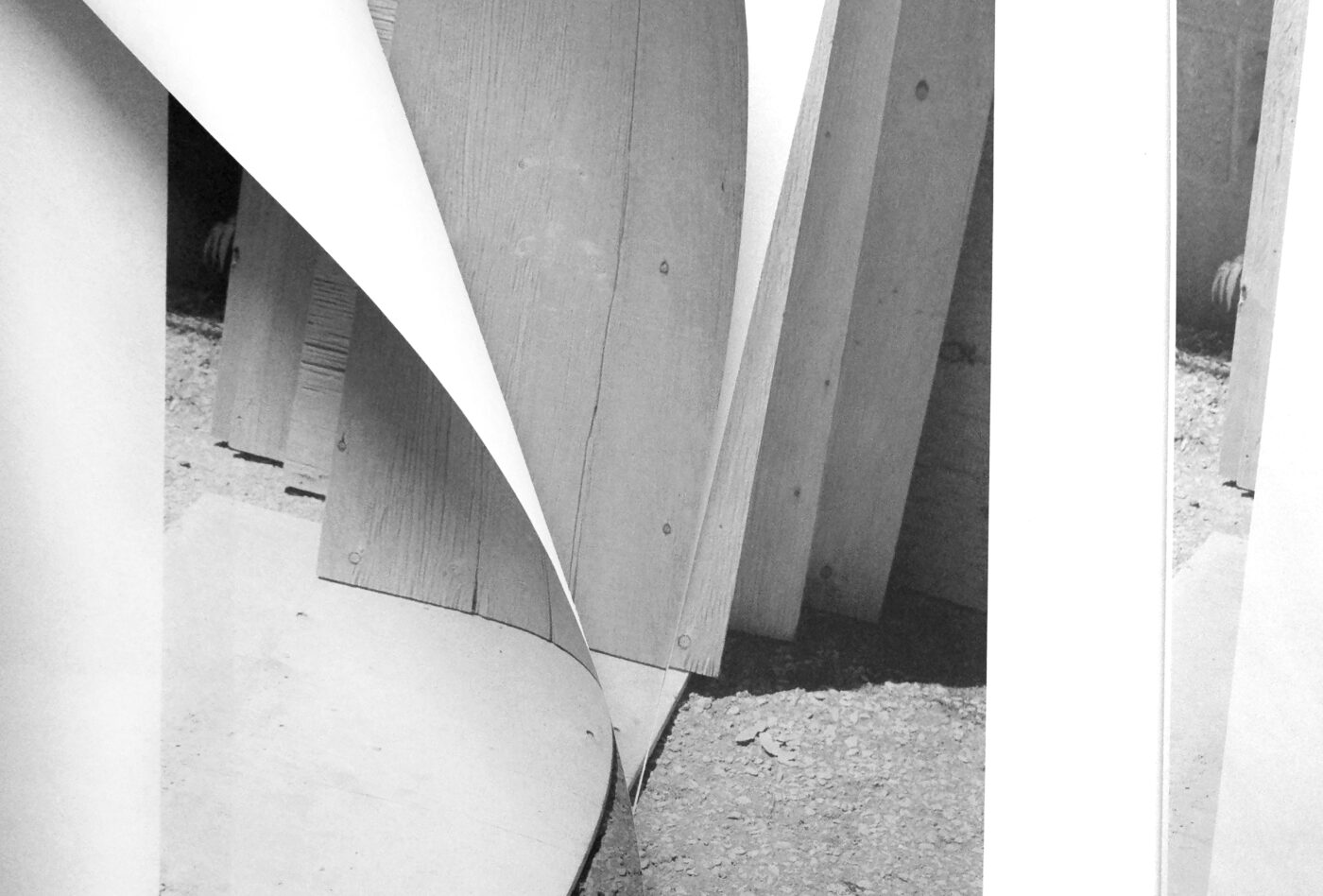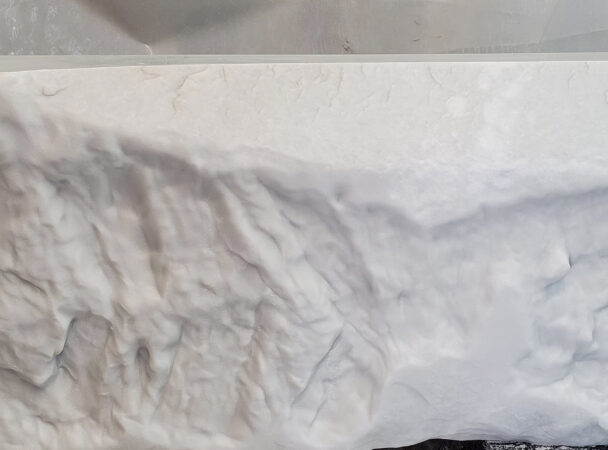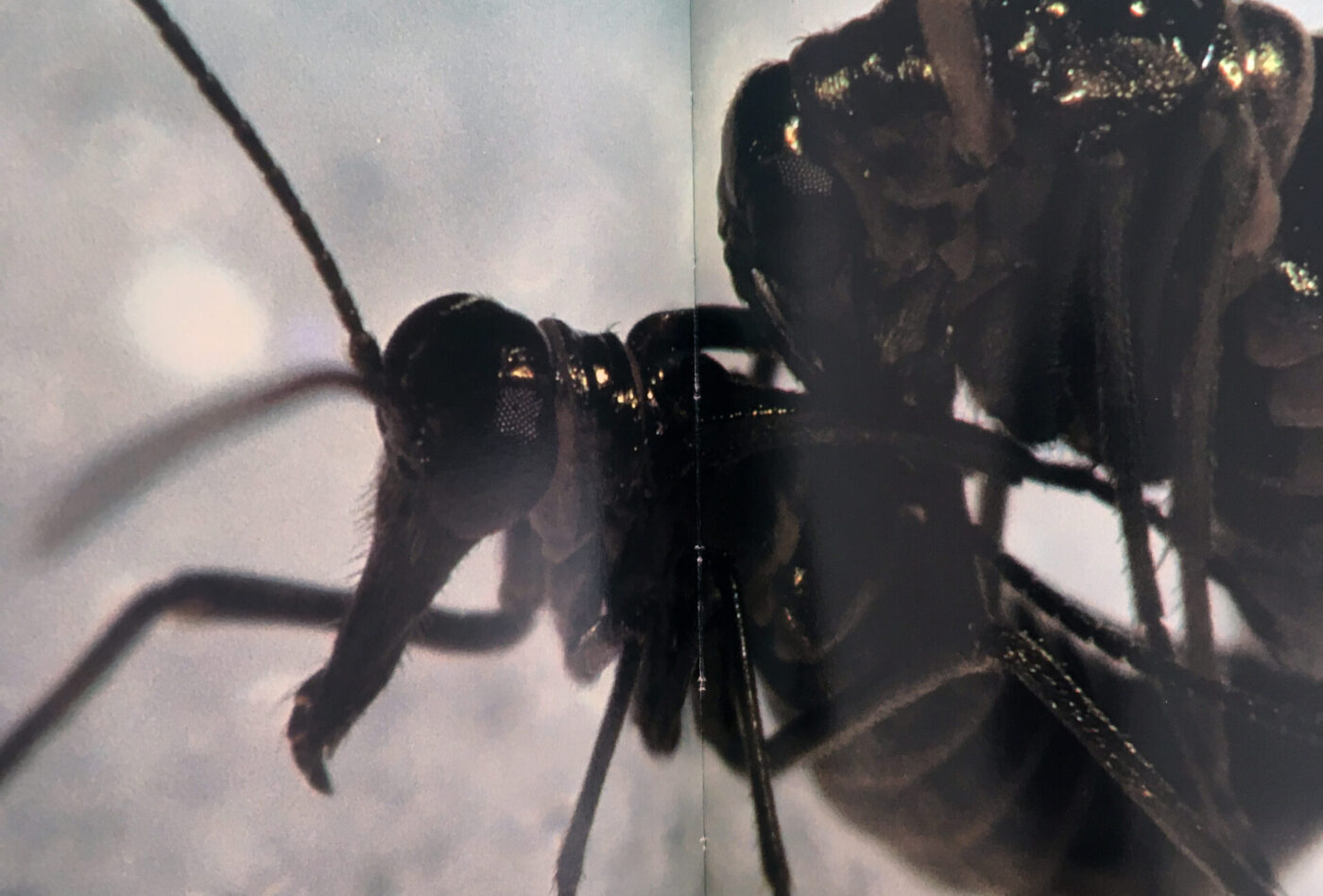
Lucie Rocher
De part et d’autre,
04.12–05.11.2024
Room 1
04.12–05.11.2024
Room 1

An industrial-type curtain blocks the gallery’s entrance while offering a blurred view of Lucie Rocher’s installation, which invites us on both sides of the artist’s nearly decade-long research process. Marking a moment in time, a milestone, the curtain also materializes the anticipation of a future experience, like an artist at the early stage of a project, a residency, or even a career.
The installation that follows offers a kaleidoscopic view of the parallel development of Rocher as an artist and the De Gaspé complex as an important artistic hub. In 2013, Rocher rented her first Montreal studio there while the building was still being renovated. As tiny as it was necessary, this private space would be the springboard to a career that would assert and refine itself in response to relocations and a growing body of work. The gradual expansion of her studio and storage spaces is reflected in the structure on the floor which, like an irregular platform, illustrates a trajectory strewn with obstacles. At the end of this deconstructed base, a lightbox with a mirrored frame presents superimposed images of the construction site that surrounded Rocher’s migrations. A surprising solitude emerges from these accumulated materials and stacked images. The proliferation of objects and the ghostly traces of the construction workers’ labor outline the edges of dizzying opportunities, a field of possibilities — or champ de possible — like the one that borders the De Gaspé studios, the image of which is also presented in the centre of the room. Its segmentation over a dozen thin beams evokes not only its modulations over time, but also the threat of its restriction due to its popularization. As the only colour photo in the exhibition, it illustrates the site’s topicality as much as its transitivity. In the exhibition space, the Champ des possibles manifests itself with the disconcerting fragility of a Barthesian “that-has-been,” magnified by the photographic “studio notes” reproduced on four steel plates on the wall. These chromed plaques are tilted so that their coloured backs reflect against the wall. The unexpected materiality of the image and the unusual weight of its support disrupt our references and expectations with regards to the image, as it shifts from auxiliary element to subject.
Photography’s inherent nostalgia is ultimately an excuse to project our future aspirations, something Rocher skillfully translates by opposing De Gaspé and Atelier en résidence. Separated by the installation Les possibles, the superimposed images of a construction site are set up across a single, solarized photo of a studio that concretizes shifting viewpoints on the work. De part et d’autre, is composed of strata, the specters of previous activities, the absorption of what-is into what-has-been, and the reflection of simultaneous presents.
—Dominique Sirois-Rouleau
This project received the financial support of Conseil des arts et des lettres du Québec (CALQ).





